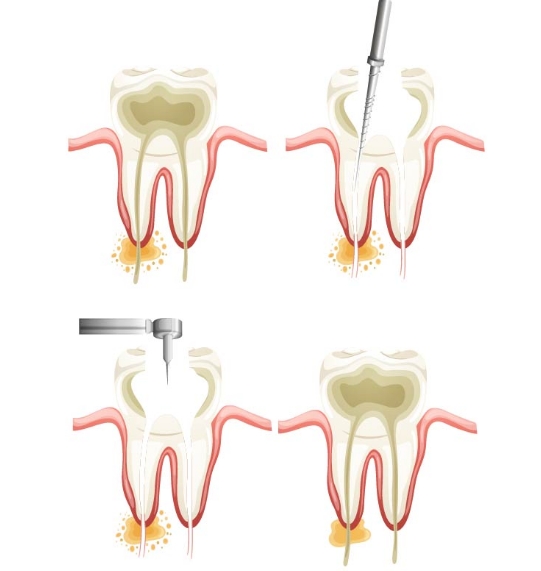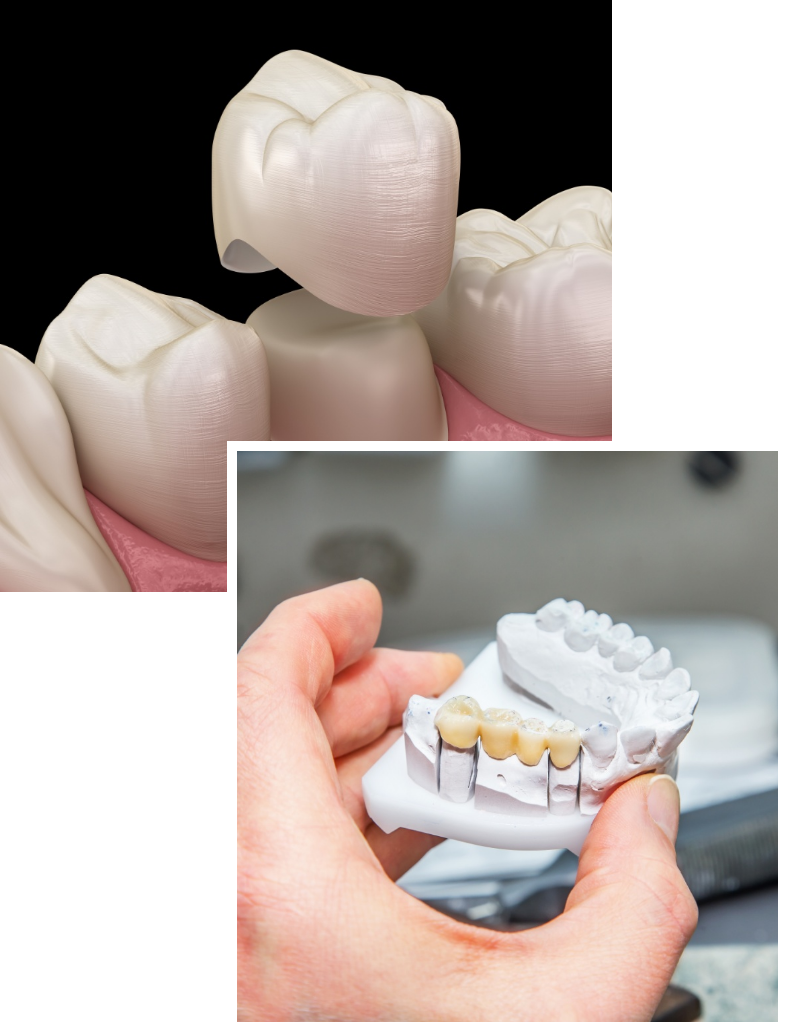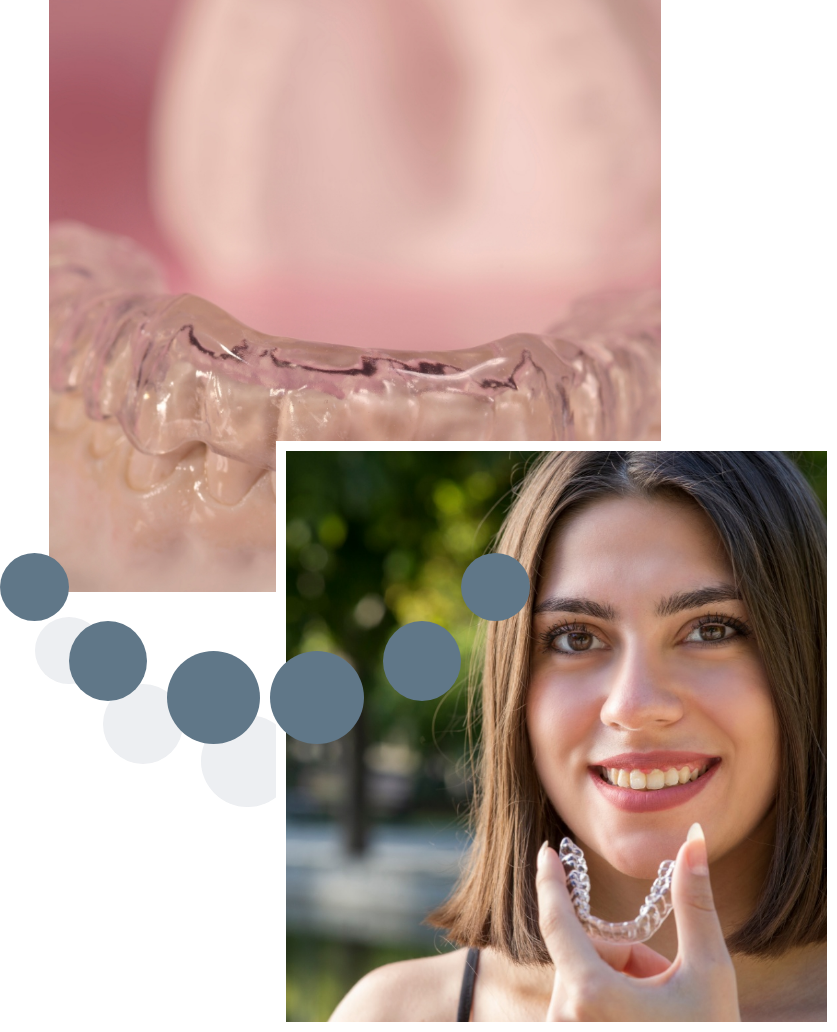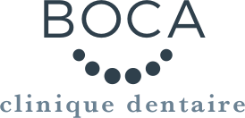General and family
dentistry
General and family dentistry meets the specific needs of all members of the family to help you maintain good oral health. Regular checkups will help us achieve this objective. During this visit, we will make a complete diagnosis of the condition of your mouth, and we will help you choose the treatment that is best suited to your situation.

Checkup and preventive dental care
Dental checkups help us detect oral diseases early. For this reason, REGULAR dental checkups are recommended. That way, the dentist will be able to offer you solutions to problems before they develop and cause more damage.
For gums, regular scaling is recommended to maintain impeccable oral health. Pour les gencives, des détartrages réguliers sont recommandés afin de maintenir une santé bucco-dentaire impeccable.
Dental filling
A dental filling is a way to restore a tooth that has been damaged by decay or a fracture in order to restore its function. The usual treatment for cavities is performed using a filling product to replace the damaged dental tissue. The dentist prepares the tooth by removing the decay and fills the cavity with filling materials.
There are several materials for restoring a tooth: composite, amalgam, porcelain, gold, etc.
The choice of material depends on multiple factors. The dentist will evaluate the most suitable filling product for your case. This will depend on the size of the cavity, your possible allergies to certain materials, the position of the tooth to be restored, and its cost.


Dental surgery
Dental surgery is a general term referring to various dental procedures involving the oral cavity. These procedures take place in a dental clinic where qualified dentists provide care. At Boca Dental Clinic, we have surrounded ourselves with professionals who take a preventive approach and will advise you on the least invasive techniques possible.
Wisdom teeth extractions, dental implants, gum grafts… these are some of the dental procedures that require surgery. The length of recovery time will obviously depend on the type of surgery and its complexity. Our team will guide you and give you the necessary advice to recover quickly from your surgery.
Root canal
Contrary to popular belief, a root canal is generally painless, since it is performed under local anaesthesia. Rather, it helps eliminate the pain caused by a tooth whose nerve is infected by decay or an abscess. When this is infected, a successful root canal allows you to preserve your tooth rather than needing to have it removed. By keeping your natural tooth, you allow your teeth to keep their proper alignment and avoid causing jaw problems.

A root canal involves removing the infected, damaged, or dead pulp from the tooth. Serious decay, cracks, or damaged restorations can lead to the formation of an abscess in the canal of the tooth. The canal contains the nerve of the tooth as well as the blood vessels that supply it. These tissues are called dental pulp. The infected pulp must be removed. Following a clinical and radiographic examination, your dentist may diagnose the infection of the pulp (pulpitis) and thereby guide you toward the best treatment to restore your tooth. In the absence of treatment, the abscess can cause serious oral health problems.
After a root canal, your tooth needs to be restored in order to give it back as much of its original function and appearance as possible. Depending on the condition of the remaining tooth structure, your dentist may recommend placing a permanent filling, a crown, or a porcelain inlay. The type of restoration will depend on the strength of the remaining portion of the treated tooth. If it is a back tooth, the dentist will probably use a crown or a porcelain inlay, because chewing exerts a great deal of pressure on these teeth. If the remaining portion of the treated tooth is insufficient, your dentist may use a post to hold the restoration in place.

Gum treatment (periodontics)
At Clinique Dentaire Boca, we place the utmost importance on the health of the gums and all the treatments that allow us to take care of them. We also estimate that 75% of the North American population suffers from periodontal diseases or will suffer from them at one point in their life. Periodontics represents the part of dentistry that allows us to diagnose, detect, and treat the tissues that support the teeth: the ligament, the bone, and the gums. These tissues are called the periodontium.
Gingivitis is an inflammation of the gums that may occur at any age. Often due to inadequate oral hygiene measures, gingivitis is caused by the buildup of dental plaque around the teeth. In the long term, if this plaque is not eliminated by brushing, it ends up hardening and turning into tartar. It is precisely the presence of tartar and plaque that causes an inflammation of the gums known as gingivitis.
Other factors are also known to cause gingivitis. The use of tobacco is the second main factor that contributes to the development of the disease. Hormonal changes, stress, taking medications, and malnutrition are all factors that may lead to the development of gingivitis.
Gingivitis appears as an unusual redness of the gums and abnormal bleeding when brushing. Bad breath and sensitivity may accompany its symptoms.
Fortunately, gingivitis is easy to treat by taking the time to have regular scaling done at your dentist and by taking care to apply the right hygiene measures.
If gingivitis is not treated and controlled, it develops into periodontitis.
The inflammation gradually extends to the bone tissue surrounding the bones and forms pockets.
Periodontal diseases therefore affect the support of the teeth and represent the primary cause of natural tooth loss in adults.
However, beyond the risks for oral health, more and more studies are showing that periodontal diseases are a risk factor for several pathologies that may affect overall health.

Bridges and crowns
Lorem Ipsum is simply dummy text of the printing and typesetting industry. Lorem Ipsum has been the industry’s standard dummy text ever since the 1500s, when an unknown printer took a galley of type and scrambled it to make a type specimen book. It has survived not only five centuries, but also the leap into electronic typesetting, remaining essentially unchanged. It was popularised in the 1960s with the release of Letraset sheets containing Lorem Ipsum passages, and more recently with desktop publishing software like Aldus PageMaker including versions of Lorem Ipsum.
Mouth guard and biteplate
Lorem Ipsum is simply dummy text of the printing and typesetting industry. Lorem Ipsum has been the industry’s standard dummy text ever since the 1500s, when an unknown printer took a galley of type and scrambled it to make a type specimen book. It has survived not only five centuries, but also the leap into electronic typesetting, remaining essentially unchanged. It was popularised in the 1960s with the release of Letraset sheets containing Lorem Ipsum passages, and more recently with desktop publishing software like Aldus PageMaker including versions of Lorem Ipsum.

